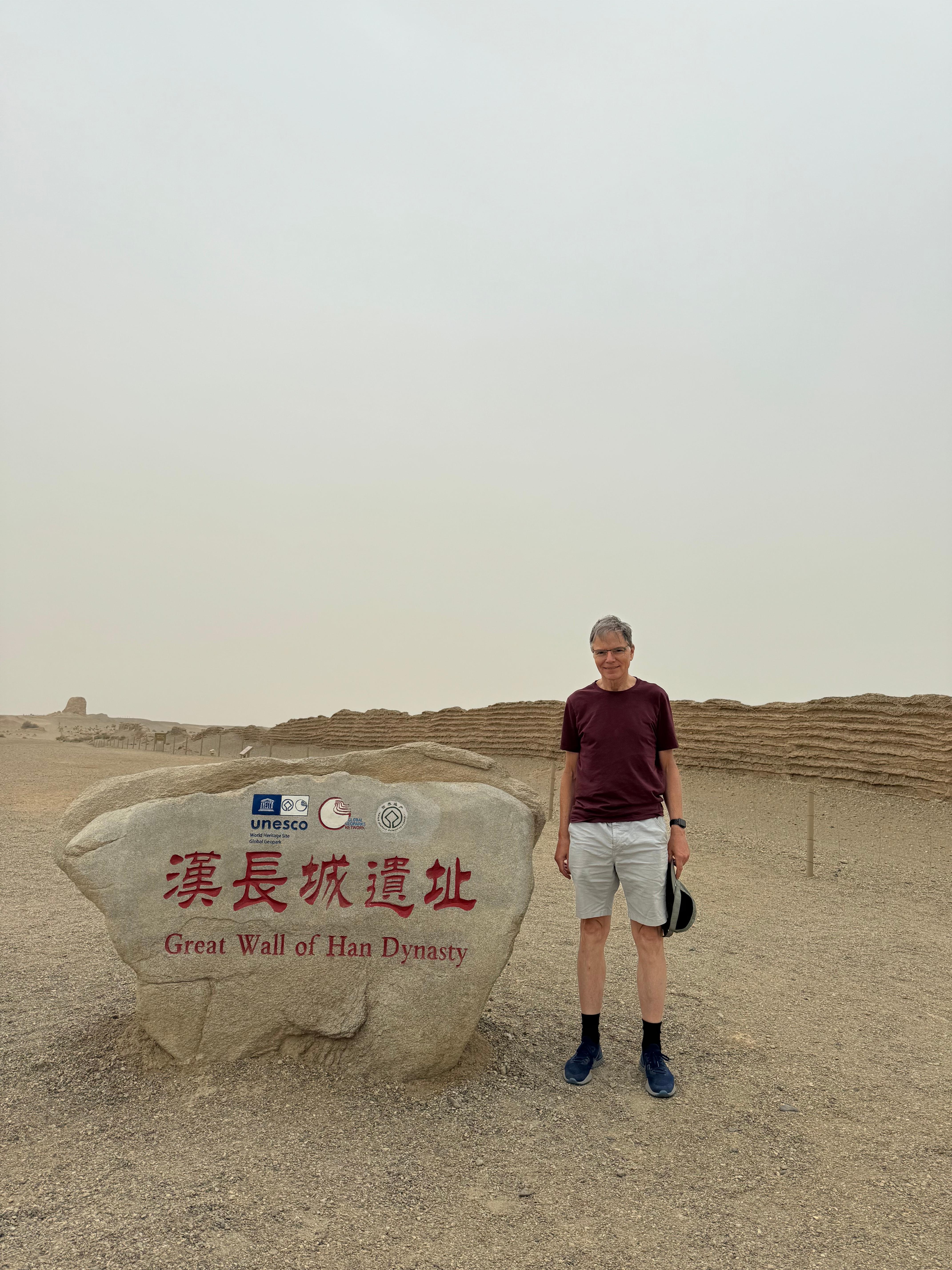Power of Architecture as a Force for Good

Dutch architect Ole Bouman had his incredible encounter with the East when he visited Dunhuang, a small city in northwestern China with an immense treasure trove. "I had a once-in-a-lifetime opportunity to visit the Mogao Grottoes at dusk, with just the sound of birds accompanying me in my encounter with this incredible legacy of Buddhism in China," Bouman told Science and Technology Daily.
The Mogao Grottoes are a complex of caves located in what was an important juncture of the ancient Silk Road, containing an amazing collection of Buddhist art, sculpture and texts.
Bouman is currently a professor at the College of Architecture and Urban Planning of Tongji University in Shanghai. In October 2023, coinciding with the 10th anniversary of the Belt and Road Initiative (BRI), he decided to go on a cycling project. He started from Amsterdam, the Netherlands, and then spanned 18 countries and covered nearly 11,000 kilometers, finishing the journey in Shanghai in July this year. He said it was a dialogue between the West and the East.
For the 63-year-old, cycling is a way of learning about the world. During his trip, he witnessed many different kinds of architecture.
The seeds of this fascination were planted when he was eight years old and his father gave him his first bicycle, which nurtured his interest in adventure and traveling. In college, he majored in history and architecture. "I like architecture because it offers a reality check to many theories and assumptions. Every piece of architecture is first and foremost a fact on the ground, verifying or falsifying the expectations that caused its realization," he said.
Architecture as shaper of lifestyles
He came to Shanghai for the first time in 2005 and subsequently, worked in Shenzhen periodically until in 2015 he chose to settle down and work in China.
"I'm particularly attracted by the Chinese respect for knowledge as a matter of fact, rather than a matter of hypothesis. I don't say this is intrinsically better, but it's effective for addressing the most pressing issues of today," Bouman said.
In 2022, he began to teach architecture at the Tongji University. In his perspective, architecture serves as a medium to shape future lifestyles. The definition of architecture as the making of buildings is an artificial one, belonging to a paradigm of individual designers, clients and contractors. "If we shift focus from making an existing practice more sustainable to redesigning the architectural discipline itself, engaging architects to much larger challenges and expanding their social mandate, we could conceive of an entirely new practice and even aesthetics," Bouman said.
"China, for its alternative economic model with a much stronger role for government, has a special responsibility and opportunity to lead the way to this new paradigm for architecture," he added.
BRI's magic on infrastructure
Bouman has traveled extensively through BRI partner countries, observing notable changes in infrastructure.
He said the BRI is reshaping the infrastructure landscape in many regions, ideally harmonizing with local traditions and enhancing residents' livelihoods. "In places like the Karakol region in Kyrgyzstan, I witnessed how Chinese-led projects boost modernization," he said.
"This is perhaps thanks to the legacy of the ancient Silk Road, which, as a conduit for cultural exchange, offers a historical precedent that people of this generation can draw upon to ensure the BRI strengthens, rather than dilutes the unique identities of the regions it touches," Bouman said.
"This is also what I try to show how people look at communities, at legacies, at patterns of peaceful development, at practices of preservation and other forms of historical respect," he said. "By seeing a bigger picture, we can act upon a bigger scale."
Architecture as a bridge
Throughout his cycling journey, he maintained close ties with his students, sharing interesting discoveries, and visiting the sites they suggested. "In one way, I was the teacher and the other way, they were my guide. That was a very nice balance between learning and teaching," Bouman said.
As he pedaled through diverse landscapes, from the ancient Silk Road to the bustling cities of today, Bouman realized that architecture is about more than just buildings — it's about shaping the way we live and interact with each other and our environment. "In each city, I saw the potential for architecture to be a force for good, to not only build structures but to build bridges — between cultures, between past and future, between people and the planet. It is this vision that I hope to carry forward, and to inspire in the next generation of architects," he said.
After returning to Shanghai, he hosted an exhibition showcasing his experiences. "I hope to share what I have seen and felt throughout the journey, especially the folk customs, cultural legends, architectural and historical sites and natural scenery of various places," Bouman said.
To aspiring architects, his advice is: "Engage with the full spectrum of architectural practice — from materials science to urban policy. Don't be afraid to experiment with new ideas and technologies, as the future of architecture lies in our ability to adapt and innovate, and remember, every challenge is an opportunity to redefine what architecture can achieve in service of society."







